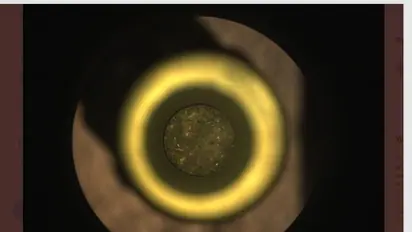It's official: NASA confirms Perseverance Mars Rover gets 'one-of-a-kind' Martian rock

Synopsis
The sample was obtained on September 1, but NASA was originally dubious if the rover had successfully retained its precious cargo due to blurry photos recorded in low light.
NASA reported that the Perseverance Mars rover successfully collected its first rock sample for scientists to examine when a future mission returns it to Earth. "I've got it!" tweeted the space agency, accompanying a snapshot of a rock core little thicker than a pencil inside a sample tube. The sample was obtained on September 1, but NASA was originally dubious if the rover had successfully retained its precious cargo due to blurry photos recorded in low light. Perseverance transported the tube to the rover's interior for more measurements and imaging after taking a fresh photo so mission control could verify its contents, then hermetically sealed it.
Also Read | Google showcases NASA's Perseverance's photo gallery; Check it out
With over 3,000 components, Perseverance's sampling and caching system is the most sophisticated device ever deployed to space. Its initial target was a briefcase-sized boulder dubbed "Rochette" from a geologically fascinating ridgeline because it includes old layers of exposed bedrock. Perseverance utilises a drill and a hollow coring bit at the end of its 7-foot-long (2-meter-long) robotic arm to retrieve samples. This process, known as "percuss to ingest," is designed to free the tube's lip of remaining debris and allow the sample to glide down the tube.
Perseverance landed in February on an old lake bed known as the Jezero Crater, on a mission to hunt for traces of ancient microbial life using an array of sophisticated equipment installed on its turret. It is also attempting to better define the geology and previous climate of Mars.
Also Read | NASA's Perseverance Mars rover fails to collect rock in search of alien life
When the rover returns to its landing location, the first phase of its science mission will be completed, which will span hundreds of sols (Martian days). It will next proceed to the delta region of Jezero Crater, which may be rich in clay minerals. Such minerals can retain fossilised evidence of ancient, microscopic life on Earth. NASA hopes to return the samples collected by the rover on a cooperative mission with the European Space Agency somewhere in the 2030s. The robot's initial effort to take a sample failed in August because the rock was too brittle to survive the drill.